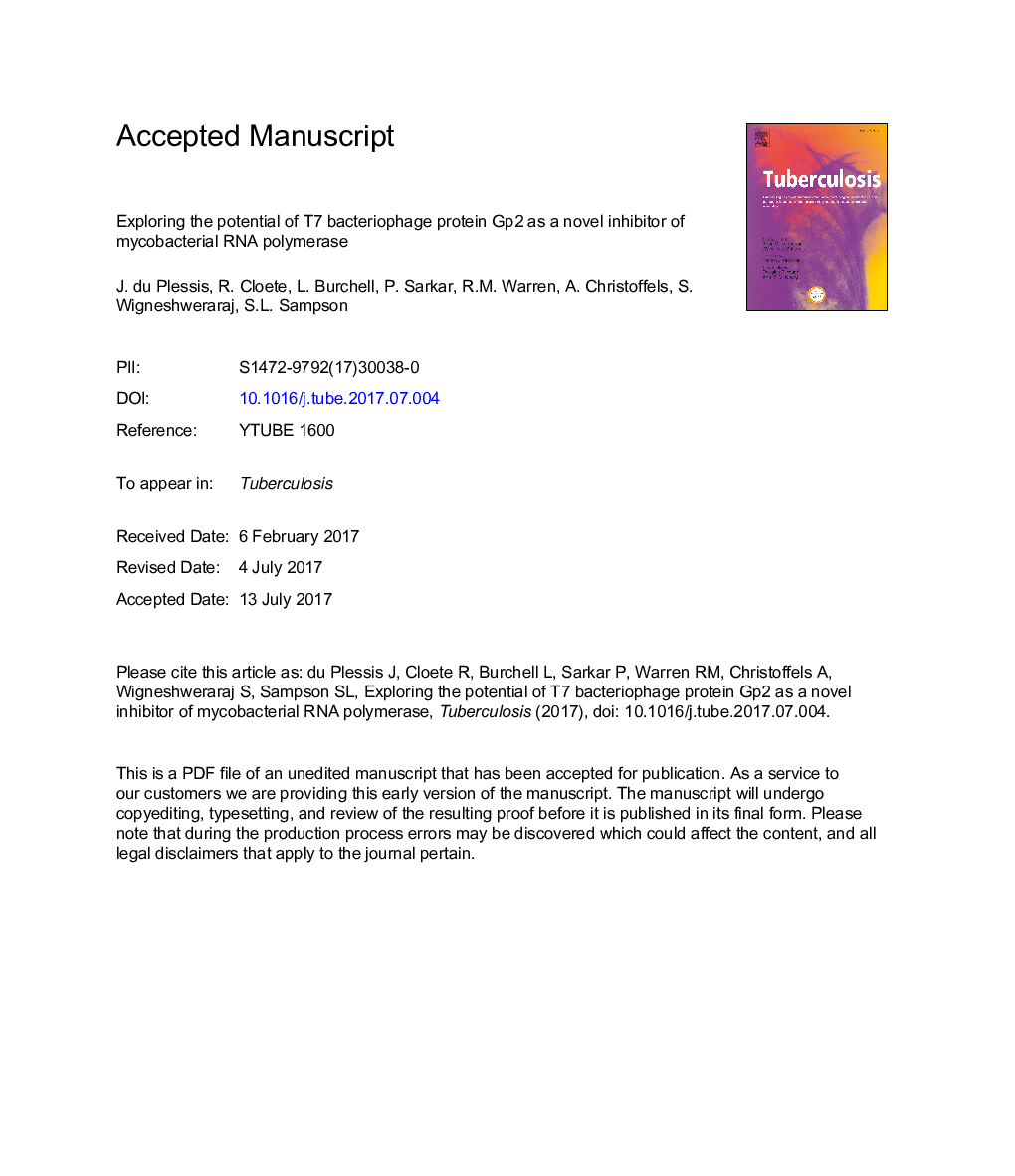| Article ID | Journal | Published Year | Pages | File Type |
|---|---|---|---|---|
| 5536266 | Tuberculosis | 2017 | 38 Pages |
Abstract
Over the past six decades, there has been a decline in novel therapies to treat tuberculosis, while the causative agent of this disease has become increasingly resistant to current treatment regimens. Bacteriophages (phages) are able to kill bacterial cells and understanding this process could lead to novel insights for the treatment of mycobacterial infections. Phages inhibit bacterial gene transcription through phage-encoded proteins which bind to RNA polymerase (RNAP), thereby preventing bacterial transcription. Gp2, a T7 phage protein which binds to the beta prime (βâ²) subunit of RNAP in Escherichia coli, has been well characterized in this regard. Here, we aimed to determine whether Gp2 is able to inhibit RNAP in Mycobacterium tuberculosis as this may provide new possibilities for inhibiting the growth of this deadly pathogen. Results from an electrophoretic mobility shift assay and in vitro transcription assay revealed that Gp2 binds to mycobacterial RNAP and inhibits transcription; however to a much lesser degree than in E. coli. To further understand the molecular basis of these results, a series of in silico techniques were used to assess the interaction between mycobacterial RNAP and Gp2, providing valuable insight into the characteristics of this protein-protein interaction.
Keywords
Related Topics
Life Sciences
Immunology and Microbiology
Applied Microbiology and Biotechnology
Authors
J. du Plessis, R. Cloete, L. Burchell, P. Sarkar, R.M. Warren, A. Christoffels, S. Wigneshweraraj, S.L. Sampson,
